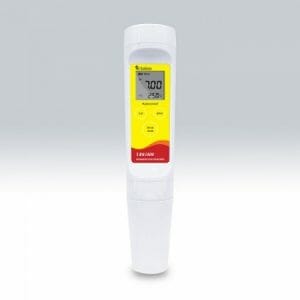Firstly, measuring instruments are important and fundamental in laboratories, they are equipment that are created to provide a solution to professionals, for monitoring their activities.
Existing laboratory instruments include meters, which are used to determine or measure the degree or volume of samples to be studied. In this sense, there are pH meters, responsible for measuring the levels of acidity or alkalinity of a solution. Also, there are the ion meters, they are used to calculate the concentration, and not the activity of the ions in the solutions, through salts, increasing the ionic force to facilitate the relationship between the electrode potential and the concentration.
And finally you find the conductivity meters, which assess the specific electrical conductivity of a substance.
In this sense, these teams possess specific qualities, able to meet the requirements, towards the determination of studies within the laboratory.
General Functions
For the development of the studies, within the laboratory field, precise results are required, it is necessary to use appropriate measuring instruments, since these were created to facilitate this task. Each type of measurement has its own instrument, including:
- PH meter: this instrument is capable of measuring the acidity or alkalinity of a solution. It is used in the laboratory by precise analysis, through polarized glass plates, sensitive to hydrogen ions. Their measurements range from 0 to 14, with the lowest value being the most acidic and vice versa. And it is used in many applications ranging from laboratory experimentation to quality control analysis.
- Ion meter: these are measuring instruments that detail a suitable sensitive membrane, to calculate the ionic activities. That is, it regulates the grouping of a given ion in an electrolyte, using a sensor electrode as a reference electrode. Once this conversion is done, the electrical potential can be measured with a voltmeter or a pH meter. They are of great importance in many aspects of life and science, as many normal substances are present in the human body in the form of ions such as sodium, potassium, calcium and more.
- Conductivity Meter: With it you can compute the amount of electrical current or conductivity in a solution. This team, can assess the health of an important natural water body. It is used to measure and control pH and conductivity. In general, conductivity depends on the concentration and type of ions, and temperature.
Importance of Meters in the Laboratory
In all laboratory work, measurement is part of the means that are carried out in the day to day, since in many cases, it is necessary to calculate exactly certain substances, or to study perfectly, the type of element that makes up a mixture. Therefore, the equipment for measuring PH, ions and conductivity are essential in these practices.
According to this, the measurement and experimentation carried out in such practices can be counted on multiple advances in medicine, such as medical treatments and vaccines. Therefore, the integration of the meters, were created precisely because of their functionality, in favor of medical advances.
PH Meter, Ion Meter and Conductivity Meter Brand Kalstein
At Kalstein, we are able to meet the demands of our users in the selection of laboratory equipment. We offer the following Meters, corresponding to the YR series, among them:
Ph meter
- Calibrate 1 to 3 points with automatic buffer recognition.
- Selectable pH buffer group including US and NIST options.
- Automatic electrode diagnosis helps the user decide whether to replace the sensor.
- The setup menu allows you to set the pH buffer group, the number of calibration points, alarm limits, hysteresis value, output from 4 to 20 mA, etc.
Ion Meter
- Setup menu allows you to configure the number of calibration points, stability criteria, temperature
- Unit, date and time, etc.
- The reset function automatically resumes all settings to factory defaults.
- Expanded memory stores or remember up to 500 data sets.
Conductivity Meter
- The 1-point compensation calibration allows the displayed value to be adjusted to a known standard.
- Relative and absolute millivolt modes ensure reliable ORP measurements.
- Ion concentration mode:
- 2 to 5 calibration points can be selected, including 8 concentration points.
- Direct reading of the ion concentration simplifies the measurement process.
At Kalstein, as manufacturers, we provide all the advice our customers need, so that their purchase is ideal, and at excellent prices. Come visit us at HERE


